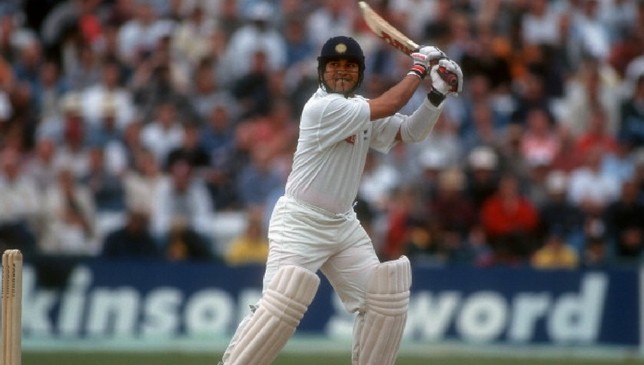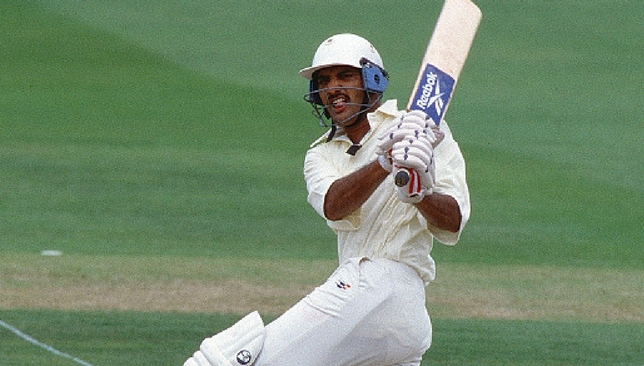
For many years, especially in the decade of the 1990s, it was a trope that came, sometimes overwhelmingly, to define Sachin Tendulkar.
The Mumbai batsman – a master cricketer, a candle in the wind, the beacon of light against a nation’s fatalist conscience – was rendered a defiant lone hand by the underperformance of his companions; heroic on his own, but ultimately fighting a fruitless cause.
It was, for example, in response to the Wisden Online 100 – a list of the top 100 Test batting and bowling performances of all time that excluded each of Tendulkar’s 25 (at the time) Test hundreds, compiled by Wisden Cricket Monthly – that the August 11, 2001 edition of Sportstar criticised the controversial omission with a pithy phrase about Tendulkar’s genius paying for the mediocrity that surrounded him.
As a corollary to this, popular recollections of the batsman’s great career moments are dominated by discussion of individual Tendulkar innings, rather than great Tendulkar-and-other partnerships. Of the latter, there are still some notable examples – the famous 136-run stand with Nayan Mongia at Chepauk in 1999 and the match-saving union with Manoj Prabhakar at Manchester in 1990 among them. But there is one that stands out above the others.
If I could go back in time, I would watch live Sachin Tendulkar's 1990s innings.
— Prasanna (@SQLInterstellar) September 28, 2016
Twenty years ago, on January 4, 1997, captain Tendulkar was joined by his predecessor Mohammad Azharuddin at the wicket in Cape Town, South Africa. Not for the first time, India were in dire straits, the Proteas having piled up a huge total, with half the visitors’ side returning to the pavilion in reply.
But together, the captain and the ex-captain took the bowling head-on, raising a sixth-wicket stand of rare genius.
After 222 runs it was all over, and the furious intensity with which the two Indians attacked the bowlers had bent the dimensions of space, time and cricket. India, however, suffered heavy defeat for the second time in the series.
Nevertheless, those who witnessed it were in no doubt of what they had seen. Fans, opponents and journalists alike failed to recall another partnership that was its equal.
It was a ‘partnership’ in the truest sense of the word; Azharuddin was not Tendulkar’s support but his equal. The former skipper matched the current incumbent stroke for stroke as the two batsmen tore the South Africans to shreds in a breathtaking retaliation.
BACKGROUND
Since taking charge the previous October, Tendulkar had overseen a period of encouraging form. After a poor 0-1 defeat in their last away series in England (Azharuddin’s last as captain), India had defeated Australia at Delhi, Tendulkar’s first Test as captain, and also beaten South Africa in his first full series, which took place in November-December of 1996. This tour was something of a ‘return leg’ for the two teams.
For their part, the quality of South Africa – reinstated to international cricket for less than five years at the time – was not in doubt. Even factoring in the defeat in India (in which they had won the Kolkata Test by 329 runs), the Proteas had won two of their past three full series, and had also claimed victory in one-off Tests against Pakistan, New Zealand and Zimbabwe.
The series began on Boxing Day on a hostile Durban pitch. It concluded just after tea on December 28, Allan Donald having taken nine wickets as India crashed to miserable totals of 100 and 66 – in a combined 72.3 overs. The home side won by 328 runs and India were immediately forced on the back foot in yet another overseas tour.
The second Test began on January 2 at Newlands in Cape Town. The Indians gave a debut to seamer Dodda Ganesh, while the home side brought in an extra bowler in spinner Paul Adams. South Africa won the toss and chose to bat.
A MOUNTAIN (OF RUNS) TO CLIMB
Despite the fact that South Africa eventually put on their highest total since their excommunication from international cricket – 529-7 declared – there was a stage when India, it could be argued, were still in it. Gary Kirsten had lives on 0 and 10, eventually striking a century in a fruitful partnership with Daryl Cullinan, who made 77.
Javagal Srinath and Venkatesh Prasad took all but one of the wickets to fall in the South African innings – Kirsten was run out – and after Srinath got rid of Hansie Cronje, Prasad dismissed Shaun Pollock. South Africa were 299-6, with Brian McMillan and Dave Richardson at the crease.
But here is where the bowling wilted and the home side ran away with the game. Richardson made a handy, though ponderous, 39, but it was when Lance Klusener replaced him that all hell broke loose. McMillan (103 not out) and Klusener (102 not out) could not be separated, with the latter making his runs in only 100 balls. It was a new South African record for the eighth-wicket.
India were 29-3 at the close of day two, Tendulkar batting with Sourav Ganguly. The following morning, the left-hander was caught at slip and VVS Laxman turned Pollock into the hands of Richardson. This brought deposed skipper Azharuddin to the crease, with India in desperate trouble at 58-5.
ONE-AFTERNOON STAND
Azharuddin had the gift of adding rich, opulent stroke play to such a grim, formidable task as a fight back. Defiance is exciting because of the primitive, adrenal thrill it brings.
The ex-captain, though, had the ability to infuse it with sinewy, sometimes gung-ho batting. Those who had watched him play at Lord’s in 1990 knew Cape Town to be virtually par for the course for Azharuddin.
“Azharuddin’s limbs flurried in a burst of energy. On the offside, the ball was dispatched everywhere – through the covers, third man, backward of point, you name it.”
His feet didn’t do much of the work, but the boundaries that sprung off Azharuddin’s bat reached the fence on account of his wrenching, contorting wrists.
A couple of deliveries were thrashed into the onside, Azharuddin’s limbs flurrying in a burst of energy. On the offside, the ball was dispatched everywhere – through the covers, third man, backward of point, you name it.
Azharuddin reached 50 off 57 balls, his play adventurous, expansive, sometime blasé in its disdain for the bowlers. At the other end, Tendulkar was batting with more restraint but scarcely less aggression. The shapes his body, with blade in hand, assumed were more in line with classical batting geometry – creamy cover drives, stately on-drives and cuts through square aplenty.
After an extended lunch break, during which the players met state president Nelson Mandela, the carnage continued unabated. Particularly severe were the batsmen on Klusener – four boundaries in his first over after lunch, 30 runs in six overs, 60 in ten – and he was not the only bowler to have his clock cleaned.
Donald was hammered at more than four runs an over, although the two Indians rode their luck when catches by Hudson and Cronje were dropped.

The South Africans were ripped apart as Azharuddin jumped to 115 off 110 balls with 19 fours and a six, Tendulkar belting a total of 26 boundaries in his eventual score of 169.
Together, the two men were running riot as the lead began to shrink, and India were within fifty runs of avoiding the follow-on when this spellbinding union was ended. Almost three hours after he had entered the field of battle, Azharuddin was run out by an atoning Hudson in the blazing heat.
Tendulkar marched on. The follow-on was avoided with two wickets remaining, but just two other batsmen reached double figures besides the two centurions.
Last out with the score at 359, Tendulkar clubbed a ball from McMillan to the square leg boundary, where Adam Bacher pulled off the kind of stunning catch that leaves the batsman, literally in this case, shaking his head in utter disbelief.
Despite the incredible firefighting, India were left stranded still 170 runs short. That they got even this close, however, can be explained in large part by 222 runs, 175 minutes, 40 overs and two extraordinary batsmen. The crowd of over 74,000 had certainly got their money’s worth.
EPILOGUE
India’s bowlers enjoyed a fine start in the game’s third innings. Both Kirsten and Bacher were dismissed for zero, and the South Africans were 33-3 before half-centuries from Hudson and Cullinan steadied the ship.
An unbeaten 101-run stand between McMillan and Pollock took South Africa 426 runs ahead and left a minimum of 118 overs to be bowled.
India collapsed to 144 all out in response, VVS Laxman top scoring with an unbeaten 35. Tendulkar and Azharuddin contributed nine and two respectively as South Africa won by 282 runs and took a 2-0 series lead.
In the final Test at Johannesburg, India reduced South Africa to 95-7 in pursuit of a target of 356. But the twin forces of a thunderstorm and an undefeated hundred by Cullinan conspired to keep the Indians from victory.
Play was ended under dark skies with South Africa tottering at 228-8 and only four overs remaining. The draw meant that the home side claimed the series 2-0.